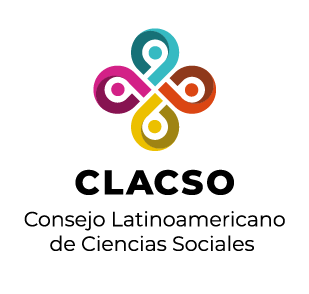Red de Bibliotecas Virtuales de Ciencias Sociales en
América Latina y el Caribe

Por favor, use este identificador para citar o enlazar este ítem:
https://biblioteca-repositorio.clacso.edu.ar/handle/CLACSO/253771Registro completo de metadatos
| Campo DC | Valor | Lengua/Idioma |
|---|---|---|
| dc.creator | Magaña Mancillas, Mario Alberto Gerardo | - |
| dc.date | 1995-01-01 | - |
| dc.date.accessioned | 2025-09-16T16:42:35Z | - |
| dc.date.available | 2025-09-16T16:42:35Z | - |
| dc.identifier | https://ref.uabc.mx/ojs/index.php/ref/article/view/335 | - |
| dc.identifier | 10.21670/ref.1995.35-36.a10 | - |
| dc.identifier.uri | https://biblioteca-repositorio.clacso.edu.ar/handle/CLACSO/253771 | - |
| dc.description | In order to increase the knowledge of the history of the indigenous groups of Baja California, this article approaches one which has no living representatives. The twenties of this century saw the last of the surviving Ñakipá; they died, and were forgotten. They "who lived in the palace of the setting sun" are a part of the history of this state, and the rescue of what remains to us of them is a means of understanding our past in a better way. So that we may remember them, this brief sketch brings together the basic information we have, and outlines some of their characteristics. | en-US |
| dc.description | Buscando ampliar el conocimiento sobre la historia de los grupos indígenas de Baja California, se presenta aquí un acercamiento a uno de ellos que ya no cuenta con representantes o sobrevivientes. En los lejanos años veinte de este siglo, las ultimas personas de los Ñakipá fueron reconocidas, y después el silencio llen6 su recuerdo. Los "que vivían donde se pone el sol" , son parte de la historia de este estado, y su rescat e es una forma de comprender mejor nuestro pasado. Con el propósito de reconstruir su recuerdo, en este breve ensayo se reúne la información básica sobre ellos y se esbozan algunas de sus características. | es-ES |
| dc.format | application/pdf | - |
| dc.language | spa | - |
| dc.publisher | Universidad Autónoma de Baja California | es-ES |
| dc.relation | https://ref.uabc.mx/ojs/index.php/ref/article/view/335/556 | - |
| dc.rights | Derechos de autor 2015 Estudios Fronterizos Revista de Ciencias Sociales y Humanidades | es-ES |
| dc.rights | https://creativecommons.org/licenses/by-nc/4.0/ | es-ES |
| dc.source | Estudios Fronterizos Revista; No. 35-36 (1995); 205-213 | en-US |
| dc.source | Estudios Fronterizos; Núm. 35-36 (1995); 205-213 | es-ES |
| dc.source | 2395-9134 | - |
| dc.source | 0187-6961 | - |
| dc.subject | communities | en-US |
| dc.subject | indigenous | en-US |
| dc.subject | integration | en-US |
| dc.subject | languages | en-US |
| dc.subject | Social sciences | en-US |
| dc.subject | Sociology | en-US |
| dc.subject | culture | en-US |
| dc.subject | Anthropology | en-US |
| dc.subject | Ethnology | en-US |
| dc.subject | Ethnic groups | en-US |
| dc.subject | Comunidades | es-ES |
| dc.subject | Indígenas | es-ES |
| dc.subject | Integración | es-ES |
| dc.subject | Idiomas | es-ES |
| dc.subject | Ciencias sociales | es-ES |
| dc.subject | Sociología | es-ES |
| dc.subject | Cultura | es-ES |
| dc.subject | Antropología | es-ES |
| dc.subject | Etnología | es-ES |
| dc.subject | Los grupos étnicos | es-ES |
| dc.title | Los Ñakipá: Grupo indígena extinto de Baja California | es-ES |
| dc.type | info:eu-repo/semantics/article | - |
| dc.type | info:eu-repo/semantics/publishedVersion | - |
| dc.type | Historical analysis; descriptive; exploratory research | en-US |
| dc.type | Análisis histórico; descriptivo; investigación exploratoria | es-ES |
| Aparece en las colecciones: | Instituto de Investigaciones Sociales - IIS/UABC - Cosecha | |
Ficheros en este ítem:
No hay ficheros asociados a este ítem.
Los ítems de DSpace están protegidos por copyright, con todos los derechos reservados, a menos que se indique lo contrario.